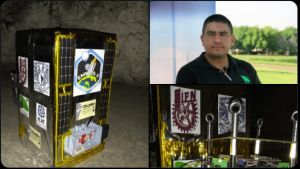CAPE CANAVERAL, Florida – NASA’s New Horizons spacecraft has sent back the last bit of data from its 2015 flyby of Pluto. New Horizons swooped past Pluto on July 14, 2015. It’s now headed to an even smaller, frozen orb in the far reaches of the solar system. That close encounter is targeted for 2019.
Mission managers opted to save all the Pluto data on New Horizons’ digital recorders, in order to maximize observing time. Only the highest priority sets of information were sent back in the days before and after the flyby, providing humanity’s first up-close look at Pluto. It wasn’t until September 2015 when the real data transmission began.
We did it! Pluto data downlink complete!! https://t.co/mYoVoN4WP9 #PlutoFlyby #Joy #Success #NASA pic.twitter.com/wi4eYZUTNn
— AlanStern (@AlanStern) October 27, 2016
In all, more than 50 gigabits of data were relayed over the past 15 months to Johns Hopkins University’s Applied Physics Laboratory in Laurel, Maryland. The final data arrived Tuesday, and NASA announced the safe arrival Thursday.
The team will make absolutely certain nothing got left behind, before erasing the recorders to make room for future observations, Bowman said.
Stern noted it will take “a great deal of work” to understand all the amazing observations made by New Horizons.
“Who knows when the next data from a spacecraft visiting Pluto will be sent?” he said in a statement.
New Horizons came within 7,700 miles of Pluto, following a journey of 9.5 years. Now the spacecraft is 350 million miles from the dwarf planet and aiming for 2014 MU69, another remote object in our solar system’s faraway twilight zone known as the Kuiper Belt. This next destination will make Pluto look immense; the ancient 2014 MU69 is thought to be no more than 30 miles across, barely 1 percent the size of Pluto, which in turn is considerably smaller than Earth’s moon.










